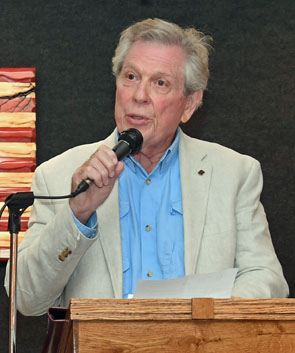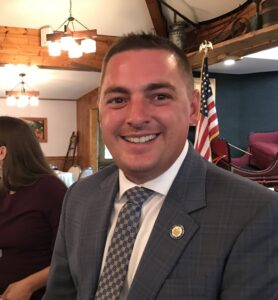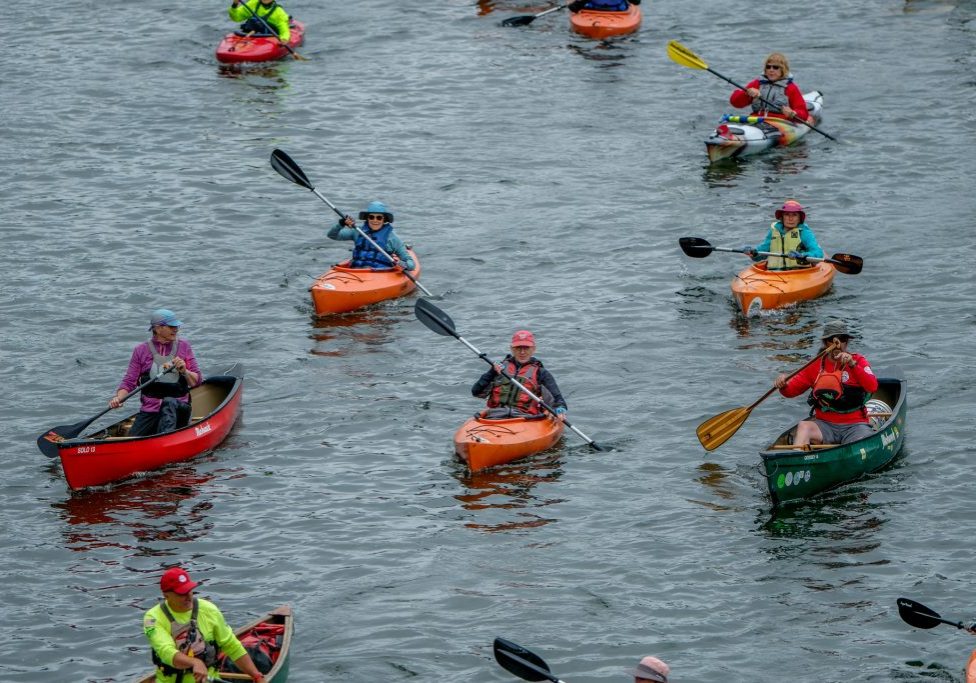
UDC is on the cusp of “financial atrophy”
Starved of funding, the Upper Delaware Council sees an unsustainable future
| March 15, 2022
The Upper Delaware Council, based in Narrowsburg, N.Y., is facing a sustainability crisis. (The UDC advises upper river towns on land-use developments, reviewing them through the lens of its River Management Plan.)
Established in 1988, it was planned to represent a formal partnership of local, state and federal governments and agencies to manage the Upper Delaware Scenic and Recreational River, a national park unit that runs 73.4 miles from Hancock, N.Y., to Millrift, Pa., which is about four miles north of Port Jervis, N.Y.
But plans go awry. Two Pennsylvania river towns (of the total of the 15 eligible riverside towns) haven’t become members of the UDC. You have to go back to the creation of the UDC to uncover the main reason why: a deep-seated fear of too much federal oversight.
Towns in UDC:
NY Hancock, Fremont, Delaware, Cochecton, Tusten, Highland, Lumberland, Deerpark
PA Damascus, Berlin, Shohola, Lackawaxen, Westfall
Towns not in UDC:
PA Manchester and Buckingham
The upper river corridor first gained federal attention when it was designated as one of 50 National Wild and Scenic Rivers in 1978. The next step was creating a river management plan.
The rest of the story, as told on the UDC website:
“The development of a plan to manage the river caused a decade’s worth of turbulence in the valley. While the environmental impact of increased river use was of concern to local residents, a vocal faction fought against the federal designation. In a rural area that prided itself on autonomy from governmental controls, fears of large-scale federal property condemnation dominated. Public pressure urged local zoning over acquisition.”
That animosity was fueled, at least in part, by the Tocks Island Dam dispute, a proposal in the 1950s for a dam that would be built a little north of the Delaware Water Gap with its reservoir running 37 miles upriver to Port Jervis, N.Y. By 1975, to make way for that dam, the government had acquired 6,000 properties through eminent domain and forced out 4,000 families.
Eventually, that project was canceled due to grassroots pressure felt by politicians from towns to states to Congress. But those people were already displaced. In its wake, we now have the Delaware Water Gap National Recreation Area, another National Park unit.
Not surprising then, that citizens of the upper river were alarmed about federal interest in “their” river.
Another wrinkle in the sustainability problem? The two states that are part of that partnership — New York and Pennsylvania — promised to support the Upper Delaware Council with $100,000 each annually.
And how much has the UDC received from those two states?
Not a penny. Let’s see. If we multiply each state’s promise by the number of years: $200K for 34 years? $6.8 million not adjusted for inflation. That’s not chump change.
Sound familiar? This is a story we’ve told before about the lack of promised funding from New York and Pennsylvania for the Delaware River Basin Commission.
In both cases this funding would be a rounding error in each state’s budget.
The National Park Service is the only founding member that makes the federally promised $300,000 annual contribution through the Upper Delaware Scenic and Recreational River. But there’s no allowance for inflation.
Not surprisingly, the staff that the UDC was initially planned with — five — was reduced early on to four. Looking into the not-so-distant future, Laurie Ramie, executive director of the UDC, said at a recent meeting that the UDC could be “reduced to one person operating out of a closet.”

Seeing its own demise, it hired a consultant to suggest how the UDC could become sustainable.
The consultant, Crane Associates from Burlington, Vt., began work in August 2021, and Michael Crane presented its findings via Zoom to the UDC at its meeting in December.
“The problem,” Crane said in a Zoom call with the UDC, “is foundational.”
“You have a life span of about eight more years if you do nothing.”
The aims of the people who set up the UDC were for it to act to protect local government, but in Crane’s words, “it actually informs on them.”
That’s its role — to uphold the River Management Plan — but it has no enforcement ability and membership is voluntary, he said.
Crane stressed that there’s a dissonance in that the UDC operates as a somewhat toothless watchdog on both local government, which it was established to protect, and on the National Parks Service, which is its conduit for federal funding.
He said this dissonance hamstrings any attempt at sustainability.
“The only way to remove operational dissonance is to rewrite the document that established this structure.”
He suggested three routes forward:
– Become a government agency under the National Park Service: ends some duplication of efforts; ends the threat to NPS and makes cooperation easier
– Become an interstate agency and retain local control: requires Congressional approval, “no easy task.”
– Become an active non-profit: more emphasis/administrative time on fund-raising
The UDC met at a half-day retreat on Feb. 5 to analyze the report and its future.
The result of that meeting is to shelve the more drastic first two suggestions and to focus only on the third: less time spent on administrative duties and more time on finding funding. Ramie said that would require an analysis of priorities, which is ongoing.
According to Ramie, the current UDC chairman, Andy Boyar, is strongly focused on finding the funding that it needs to ensure its future.

He penned several letters and those letters are indeed strong.
Here’s an excerpt from the one to Deb Harland, Secretary of the U.S. Department of the Interior, the source of UDC’s federal funding:
“Our funding stream, initially $300,000, has not increased by even a thin dime but has shrunk by time and inflation to the point of financial starvation. This is not hyperbole as a thorough independent analysis of our operation confirmed that our council is on an unsustainable financial path. We are on the cusp of being unable to administer and manage the River Management Plan due to financial atrophy.”
He wrote separately to New York Governor Kathy Hochul and to Pennsylvania Governor Tom Wolf.
In both letters he said: “We cannot fulfill our missions without (your) funding commitment.”
These were sentiments that were repeated in letters to New York and Pennsylvania Congressional representatives and to local legislators.
Delaware Currents reached out to those state legislators to ask what the state of funding was, and what they were doing about it:
NY State Sen. Mike Martucci, 42nd district
NY Assembly Aileen Gunther ,100th District
NY Assembly Joseph Angelino, 122nd District
Pa. State Sen. Lisa Baker, 20th District
Pa. Rep. Jonathan Fritz, 111th District
Pa. Rep. Mike Peifer, 139th District
Only one legislator replied substantively — Republican Martucci, who represents Sullivan and Orange counties.

“The Upper Delaware has been ignored for far too long, which is why I am working with Assembly Member (Aileen) Gunther to get a $100,000 line item placed into this year’s state budget to support the good work being done here,” he said. “I’m going to be working with my colleagues on both sides of the aisle to push for funding not only this year, but in the future as well.”






